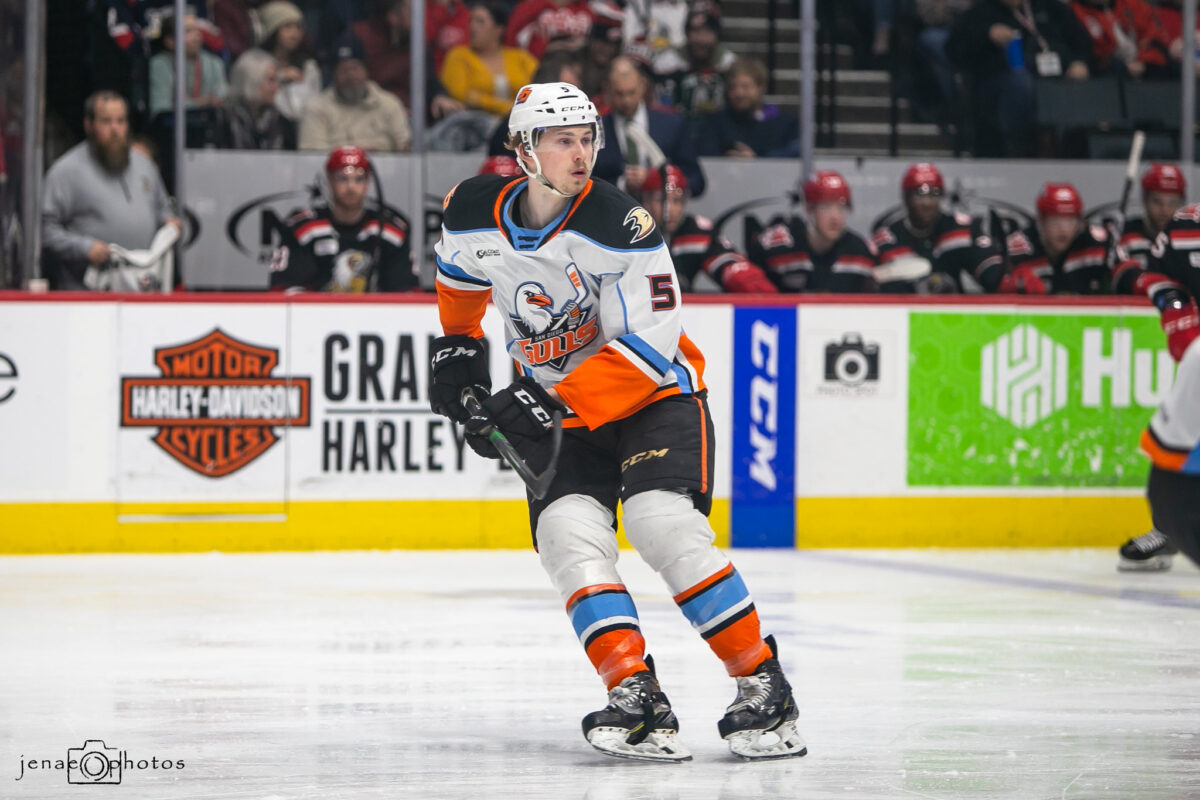The Anaheim Ducks head back home to southern California after a short but densely-packed road trip. The trip included five games in seven days, including a pair of back-to-backs, and it knocked out four of the sixteen Eastern Conference road games the Ducks will have to play this season. The offense seemed to sputter at times during the trip, primarily due to the absences of Ryan Getzlaf and Adam Henrique, who were out with injuries. Despite the lack of firepower, the Ducks managed a 3-1-1 record and now sit alone at the top of the Pacific Division, though the second-place Calgary Flames have two games in hand and only trail the Ducks by a point.
Ducks Lean Heavily on Zegras Line in Absence of Getzlaf, Henrique
Getzlaf missed the first three games of the road trip, while Henrique went on injured reserve after sustaining a hit against the Flames just before the trip started. As a result, head coach Dallas Eakins had to shuffle the lineup. A dip in offensive production was bound to occur with two of their top scorers out of the lineup, but the adjustments did little to help.
Related: Anaheim Ducks News & Rumors: Robinson, Henrique & More
Troy Terry, who had been thriving on a line with both Getzlaf and Henrique, suffered the most as a result. Prior to Getzlaf’s return to the lineup for the fourth game of the trip against the Pittsburgh Penguins, Terry was anchored down by linemates Sam Steel and Vinni Lettieri. The injuries presented an opportunity for Steel, who was previously moved from center to wing in hopes that the fewer on-ice responsibilities would aid his development in the NHL. While playing as a bottom-six winger, he’s been serviceable. But his struggles to center a line continued, and the makeshift line was only responsible for one goal in three games together. Terry eventually unleashed, scoring two goals in the final game of the trip against the St. Louis Blues, including a gorgeous penalty shot in overtime.
As a result of the injuries, the line of Rickard Rakell, Trevor Zegras and Sonny Milano faced additional pressure to carry the offensive production. They answered the call in the first two games, tallying two goals and six assists. The most memorable of the trip (and probably the whole season) was the Zegras-to-Milano Michigan-style goal against the Buffalo Sabres. That would be the last goal the line contributed to as the offense began to sputter. The Ducks only managed three regulation goals over the final three games of the trip, which included their first shutout loss of the season at the hands of Casey DeSmith and the Penguins on Saturday night.
Simon Benoit Locks Down Bottom Pair
The bottom of the defensive depth chart has been a struggle for the Ducks for several seasons now, especially on the left side. Jacob Larsson spent the better part of the last three seasons in that spot, but his struggles at the position have given the opportunity for Josh Mahura and Simon Benoit to take over. Mahura has the edge in NHL experience, having played 41 games prior to this season compared to Benoit’s six. But based on their recent usage, it looks as if Benoit has the job over Mahura, who is now only seeing playing time during back-to-back situations. Benoit’s underlying numbers are far from exceptional, posting a Corsi for (CF%) of 48.14% and an expected goals percentage (xGF%) of 49.48%, but they’re acceptable from a bottom-pairing defenseman and better than Mahura’s numbers.

Benoit’s most eventual sequence during the road trip came against the Washington Capitals when he hip-checked John Carlson. Benoit was whistled for interference, served his time, and came out of the box and was challenged by none other than Tom Wilson to fight. Benoit acquiesced, and the two exchanged pleasantries, though Benoit was mostly in self-preservation mode. There’s not much spin to add to the fight. It’s probably admirable that Benoit agreed to take on one of the premier enforcers in the NHL. But feeling the need to fight after a play that, while dangerous, caused no injuries just seems reckless. But this mindset still exists in the NHL today, and the future of fighting in the NHL best deserves its own space to discuss.
The Ducks Look Like a Playoff Team
The road trip was a good barometer for where the Ducks stand in the NHL. They remain one of the bigger surprises of the season, and the longer that sentiment continues, the more likely it is that they will be returning to the playoffs this season. The lack of depth scoring is certainly a concern, but their ability to win low-scoring contests is another good sign for when goals are harder to come by in late April. Locking them into the playoffs may be a bit premature with how volatile the Pacific Division can be, especially with the quickly-improving Vegas Golden Knights only holding onto a wild card spot. But at this point in the division race, point accumulation is ultimately more important than simply passing an eye-test, and the Ducks are doing both well enough to contend in the Pacific Division for the rest of the season.
Looking ahead, the Ducks face Pacific Division opponents in seven of their next eight games. If they’re to continue this path towards the Stanley Cup Playoffs, they will need to continue racking up wins, preferably in regulation. The Ducks have played overtime in five of their last eight games. The generosity of three-point nights is fine against Eastern Conference opponents, but handing out overtime “loser points” will only tighten division races. With Getzlaf back in the lineup and the defense locked in, they’re in a good position to continue racking up points.
